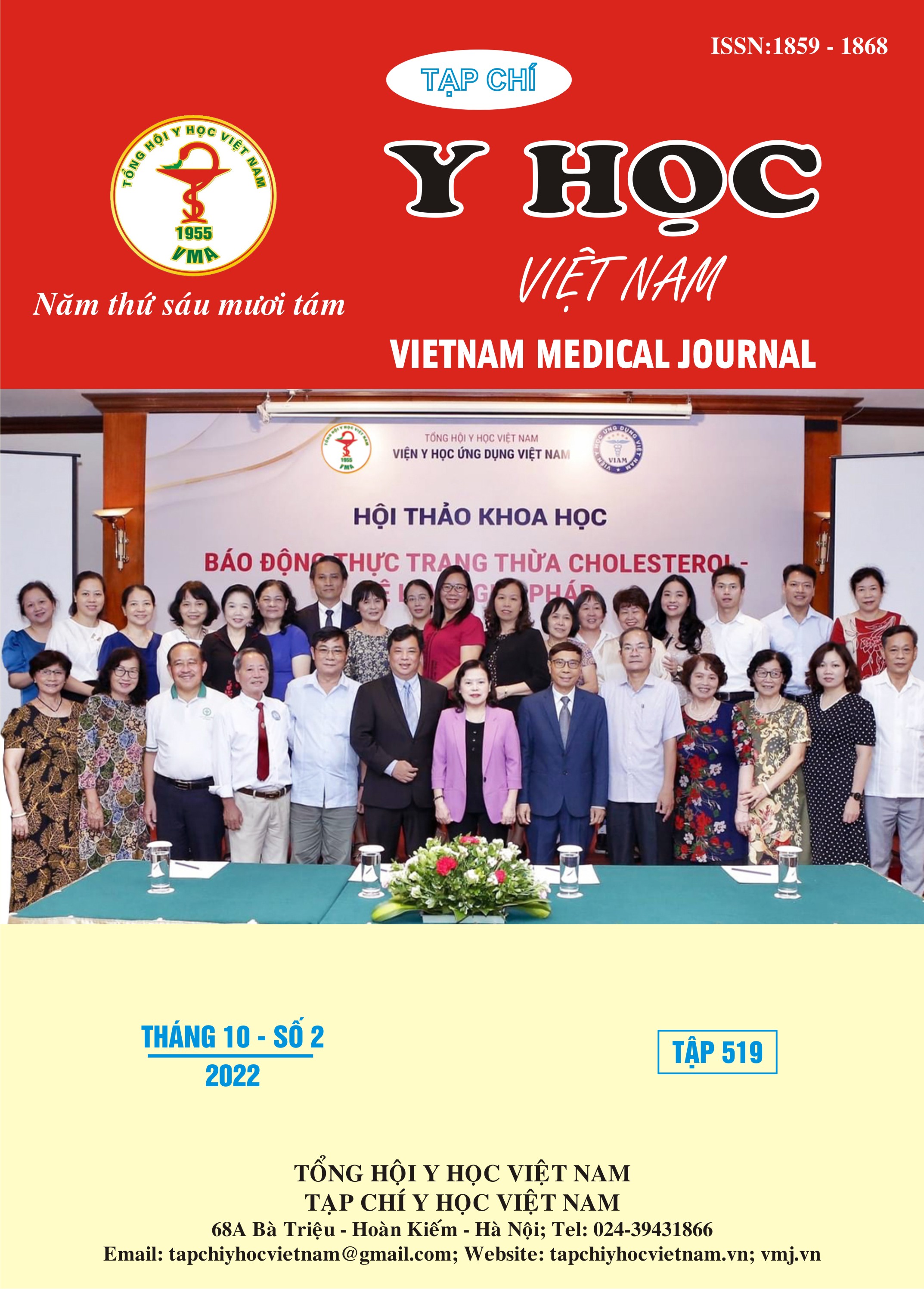STRESS LEVEL OF ADOLESCENTS USING BRACES FOR THE TREATMENT OF IDIOPATHIC SCOLIOSIS
Main Article Content
Abstract
Idiopathic scoliosis is a common disease that causes spinal deformity in children over the age of ten. Braces have been proven to be effective in the treatment of idiopathic scoliosis. However, wearing a brace for an extended period of time makes patients feel self-conscious about their appearance, which leads to stress in adolescents. Objectives: This study aims to evaluate the stress level of adolescents using braces for the treatment of idiopathic scoliosis and analyze some related factors. Patients and methodology: A cross-sectional study was conducted on 114 adolescents undergoing braces at the Vietnam National Children's Hospital and the Ho Chi Minh City Hospital for Rehabilitation-Professional Diseases. Selection criteria include females aged 10 to 17 and males aged 10 to 18 who have idiopathic scoliosis with a major Cobb angle of 20 to 40°, a treatment period of 3 to 24 months, and wearing a time brace for 12 hours or more. The BSSQ scale with two versions, Brace and Deformity, was utilized in the study to assess the stress level of individuals with idiopathic scoliosis. Results: The high level of stress from the BSSQ Brace and Deformity scales was 83.3% and 71.1%, respectively. The correlation between the level of stress according to BBSQ- Deformity and attending extra courses proved to be a significant statistic (p=0.022). Conclusion: Adolescents with idiopathic scoliosis have high-stress levels. It is necessary to conduct health education, psychological and social support to mitigate the consequences of stress during braces treatment.
Article Details
Keywords
Stress, brace treatment, idiopathic scoliosis, BSSQ questionaires
References
2. Kotwicki T, Kinel E, Stryła W, Szulc A (2007) "Estimation of the stress related to conservative scoliosis therapy: an analysis based on BSSQ questionnaires". Scoliosis, 2, pp. 1.
3. Cilli K, Tezeren G, Taş T, Bulut O, Oztürk H, Oztemur Z, et al. (2009) "School screening for scoliosis in Sivas, Turkey". Acta Orthop Traumatol Turc, Sivas il merkezinde skolyoz için okul taramasi., 43 (5), pp. 426-430.
4. Suh S, Modi H, Yang J, Hong J (2011) "Idiopathic scoliosis in Korean schoolchildren: a prospective screening study of over 1 million children". European spine journal: official publication of the European Spine Society, the European Spinal Deformity Society, and the European Section of the Cervical Spine Research Society, 20 (7), pp. 1087-1094.
5. Ewa M, Maciej G, Jerzy H (2011) "Brace and deformity-related stress level in females with adolescent idiopathic scoliosis based on the Bad Sobernheim Stress Questionnaires". Med Sci Monit, 17 (2), pp. 83-90.
6. Kinel E, Kotwicki T, Podolska A, Białek M, Stryła W (2012) "Quality of life and stress level in adolescents with idiopathic scoliosis subjected to conservative treatment". Stud Health Technol Inform, 176, pp. 419-422.
7. Han J, Xu Q, Yang Y, Yao Z, Zhang C (2015) "Evaluation of quality of life and risk factors affecting quality of life in adolescent idiopathic scoliosis". Intractable & Rare Diseases Research, 4 (1), pp. 12-16.
8. Pezham H, Babaee T, Bagheripour B, Asgari M, Jiryaei Z, Vahab KR, et al. (2022) "Stress level and quality of life of adolescents with idiopathic scoliosis during brace treatment". Turk J Phys Med Rehabil, 68 (2), pp. 231-237.


